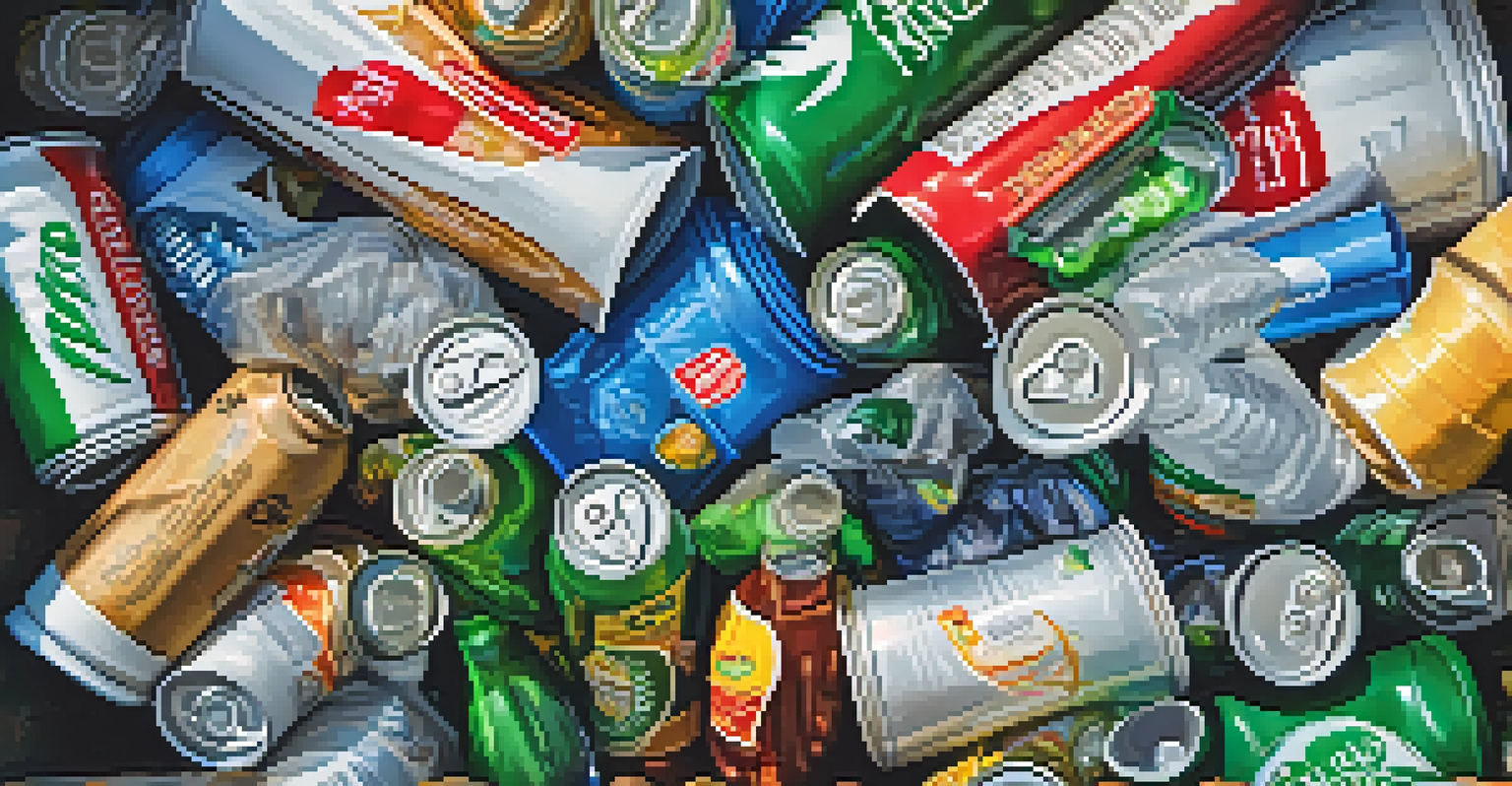Waste Management Challenges in Hawaii: A Growing Concern

Understanding Hawaii's Unique Waste Management Landscape
Hawaii, known for its lush landscapes and vibrant culture, faces unique waste management challenges. The islands' geographical isolation and limited land space complicate the disposal and processing of waste. With a growing population and increasing tourism, the volume of waste generated continues to rise, putting pressure on existing systems.
The greatest threat to our planet is the belief that someone else will save it.
In addition to the sheer volume, the types of waste produced in Hawaii present their own challenges. Organic waste, plastics, and construction debris are just a few examples of what needs to be managed. The island's reliance on imports also means that waste management strategies must consider not just local practices but also the larger environmental impact.
Understanding these challenges is crucial for developing effective waste management policies. By addressing the unique aspects of waste in Hawaii, stakeholders can work towards solutions that not only protect the environment but also preserve the islands' beauty for future generations.
The Impact of Tourism on Waste Generation
Tourism is a double-edged sword for Hawaii's waste management efforts. While it significantly boosts the local economy, it also leads to a dramatic increase in waste production. Tourists generate a large amount of disposable items, from food packaging to single-use plastics, which contribute to the islands' waste crisis.

During peak seasons, some areas see their waste levels soar, straining local landfills and recycling facilities. For example, popular beaches and tourist attractions often become littered with trash, creating not only an environmental hazard but also a negative impression for visitors. This situation calls for urgent attention from both local governments and the tourism industry.
Tourism Drives Waste Challenges
The surge in tourism leads to increased waste production, straining Hawaii's waste management systems.
To mitigate these impacts, initiatives like waste reduction campaigns and sustainable tourism practices are essential. By encouraging tourists to be mindful of their waste, Hawaii can work towards a more sustainable future while maintaining its status as a premier travel destination.
The Role of Recycling in Hawaii's Waste Management
Recycling plays a critical role in Hawaii's waste management strategy, yet it faces its own set of challenges. While many residents are eager to participate, the lack of facilities and infrastructure can hinder effective recycling efforts. For instance, some islands have limited access to recycling centers, making it difficult for residents to properly dispose of recyclable materials.
We do not inherit the earth from our ancestors, we borrow it from our children.
Moreover, contamination is a significant issue in the recycling process. When non-recyclable items are mixed with recyclables, it can lead to entire batches being sent to landfills. This not only wastes resources but also undermines the community's recycling efforts, making education and awareness paramount.
To improve recycling rates, initiatives aimed at increasing access to recycling programs and educating residents about proper practices are essential. By fostering a culture of recycling, Hawaii can reduce its overall waste and promote environmental sustainability.
Landfill Limitations: A Growing Concern
Hawaii's landfills are reaching their limits, raising urgent concerns about waste disposal. With limited space on the islands, finding new locations for landfills is increasingly challenging. This scarcity of land not only affects waste management but also has broader implications for community health and safety.
As existing landfills become overburdened, the risk of environmental contamination increases. Leachate, the liquid formed when waste breaks down, can seep into the ground and contaminate local water sources. This poses serious risks to both human health and the delicate ecosystems that make Hawaii unique.
Recycling Needs Community Support
Effective recycling in Hawaii relies on community engagement and education to overcome infrastructure challenges.
To address these issues, innovative waste reduction and diversion strategies are needed. By exploring alternatives such as composting, waste-to-energy technologies, and more efficient recycling methods, Hawaii can work towards reducing its reliance on landfills and promoting a more sustainable approach to waste management.
Community Involvement in Waste Management Solutions
Engaging the community in waste management solutions is vital for success in Hawaii. Local residents, businesses, and organizations all play a crucial role in shaping effective waste reduction strategies. Grassroots initiatives often lead to creative solutions tailored to the unique needs of each island community.
Examples of community involvement include beach clean-up events, educational workshops, and local recycling programs. These efforts not only help reduce waste but also foster a sense of stewardship and connection to the environment. When residents feel invested in their community, they are more likely to adopt sustainable practices.
Building strong partnerships between government, businesses, and community members can amplify these efforts. By working together, Hawaii can create a more sustainable future that prioritizes environmental health and empowers residents to take action.
Innovative Technologies in Waste Management
Innovation is key to tackling waste management challenges in Hawaii. Cutting-edge technologies are emerging to help reduce waste and improve recycling processes. For instance, advancements in waste-to-energy systems can convert organic waste into renewable energy, reducing the amount of waste sent to landfills.
Additionally, smart waste management solutions, such as sensor-equipped bins, can optimize collection routes and reduce costs. These technologies not only enhance efficiency but also minimize the environmental impact of waste collection. As more businesses and municipalities adopt these innovations, Hawaii can move towards a more sustainable waste management system.
Policy Reforms for Sustainable Waste
Stricter regulations and collaborative policies are essential for addressing Hawaii's waste management issues and promoting sustainability.
However, technology alone won't solve the problem. It must be paired with community engagement and education to ensure that residents understand and embrace these new solutions. By combining technology with community involvement, Hawaii can pave the way for a cleaner, greener future.
Policy Changes Needed for Effective Waste Management
Effective waste management in Hawaii requires policy changes that prioritize sustainability. Current regulations may not adequately address the challenges posed by increasing waste generation and limited disposal options. Lawmakers must consider stricter regulations on single-use plastics and incentivize businesses to adopt greener practices.
Creating policies that support recycling and composting programs is essential to reducing waste. For example, implementing deposit-return schemes for beverage containers can encourage recycling and decrease litter. These changes not only help the environment but also promote a circular economy where resources are reused and recycled.

Collaboration between government, businesses, and the community is vital in shaping these policies. When all stakeholders work together towards common goals, Hawaii can develop a comprehensive waste management strategy that benefits both the environment and the economy.